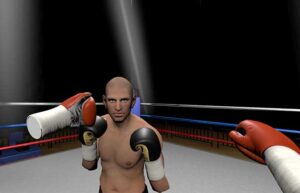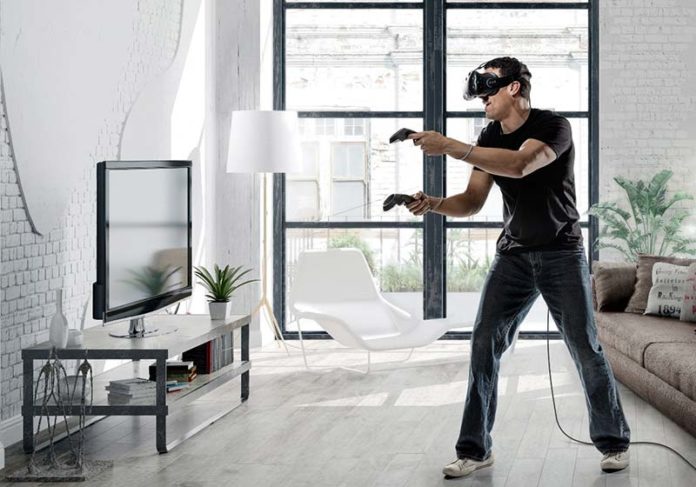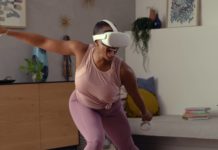VR Fitness checks all the right boxes. Does it provide workouts for all possible intensity levels? Check. Does it lower the perceived exertion of exercising, enabling better performance? Check. Does it make timed workouts feel shorter than they actually are? Check. Does it engage the mind just as much as the body, making workouts dynamic and fun? Check, check, check!
However, it’s practically impossible to describe the experience of virtual reality to the uninitiated, let alone convincing them that it can offer a comparable or superior workout experience next to traditional cardio exercise. In fact, I don’t even make much of an effort in describing the experience or the impact that it can have beyond saying that it’s fun, immersive, and effective. Instead, I simply state that they must try it to understand. Once in, the value reveals itself and all the positive conclusions become self-apparent. Even better, you can just nod and smile when they explain the benefits to you.
No, the trick isn’t convincing those who have tried it how great it is, the trick is convincing newcomers that they should try it out. If they are open-minded to the concept, then the task is easy enough, but there is widespread misconception and reluctance that becomes an obstacle for others. I generally hear the same misgivings about VR fitness time and again and it’s important to remember that their concerns are legitimate and not to dismiss them, but instead to acknowledge and assuage them.
Concern 1: I get motion sick/vertigo/etc

First and foremost, any games that are demonstrated should be free of artificial locomotion, that is, you can only move in the game by moving in real life. Among the hundreds of new initiates I’ve worked with, I’ve never once had an instance of motion sickness occur under these conditions. Tell the newcomer that you understand and that it’s been an issue with older VR technology, that the causes of motion sickness have overwhelmingly been resolved, and that thousands of people who suffer from those ailments have been completely comfortable in VR.
It’s natural for them to still feel like they will be the exception to the rule, so you’ll need to prepare them how to respond if they do feel discomfort. Make it clear that if they do feel any discomfort that the experience will immediately end. All they have to do is close their eyes, and say, “Hey, I’m done.” If they still aren’t convinced, as a last-ditch offer them a chair. There a number of games to get them moving that can be easily achieved seated, like Bitslap, Audioshield, and Fruit Ninja. I bet you anything that after a minute or two in-game they’ll forget they ever mentioned it.
Concern 2: I don’t play/like video games

Most people who don’t play or enjoy video games aren’t interested in memorizing complicated button combinations or navigating complex menus and they largely see gaming as being both of those things. Luckily the best games for VR fitness have limited menus and few if any, buttons to press.
Explain that even though the word “intuitive” gets thrown around a lot with new technologies that VR truly is an intuitive experience. The game movements and gestures that they are accustomed to using in real life will correspond to their movements in VR. In my experience, those individuals who have less exposure to gaming – or technology in general – actually have more fun.
Concern 3: VR exercise looks too intense/not intense enough

I tell these folks that unlike a treadmill, where you set a speed and either keep up or fall off, you get to set your own pace in VR. VR exercise will only push you as hard as you push yourself and, depending on the level of intensity they desire, there are games that can be scaled up or down to satisfy their abilities and comfort zones. Describe the games that you feel will be the best fit for their needs and offer some coaching on how they can either get more rest (eg. reducing movement, pausing the game for water breaks), or get more activity (eg. increasing movement, reducing rest).
It can be a delicate balance though, and on more than one occasion have I seen someone who wanted “maximum intensity” get totally gassed out after 40 seconds of The Thrill of the Fight, practically collapse on the floor, and hobble off defeated. The goal for any person using VR fitness should be to find a comfortable level of exertion that they can maintain throughout the entire workout and you will have to communicate with that person to help them find their own “Goldilocks’ Zone.”
Concern 4: Is it clean?

Unlike some of the other concerns listed here, hygiene should always be addressed up front. At VR Fit everyone wears a bandana which is laundered on-site and helps absorb sweat and creates a barrier between the headset and the player. The headset and wands get wiped down with anti-bacterial wipes and the lenses with lens wipes. Players also use hand sanitizer before and after.
Concern 5: I will trip/fall/wander off

This should also be addressed with every new user. Have a sensible cable management system and boundary setup that you can describe and ensure that they understand how it functions. Also, reassure them that they will be supervised and assisted if they venture beyond the safe zone.
99 times out of 100, addressing these concerns will be enough to reassure them. Do check in with them and open-endedly ask how they’re doing from time to time once they are in, but avoid calling attention to their initial concerns unless it feels warranted. If however, their reluctance can’t be overcome, don’t push. Encourage them to watch others – which itself can be almost as entertaining – and offer an open invitation to try it anytime.
Have any suggestions or experiences of your own for making VR fitness accessible for novices? Let us know in the comments below.








